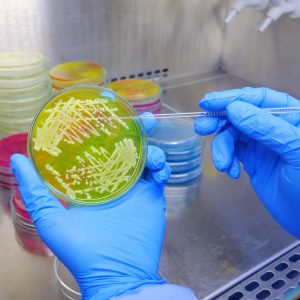Today, it takes at least a day to determine the presence of certain bacteria in the blood. However, the new device, which was developed by US scientists, will provide results in minutes, not days.
The new device is presented by a team from Pennsylvania State University in an article in the scientific journal of the National Academy of Sciences (Proceedings of the National Academy of Sciences), which was released on May 6.
The device uses microtechnology to capture individual bacterial cells, which can then be seen under an electron microscope. This approach allows clinicians to determine in as little as 30 minutes whether bacteria are present in the biomaterial, as well as assess their susceptibility to drug treatment. “Currently, the biomaterial that is tested for bacteria is in the laboratory for several days – during this time we have to prescribe antibiotics without being sure if the patient has a bacterial infection,” says Park Kin Won, co-author of the study, professor biomedical engineering. “That’s not good, and that’s exactly what we were aiming to solve—how quickly can we detect the presence of bacteria?”
The article says that in addition to being able to detect the presence of bacteria in the blood, the device can classify the type of infectious cells, determining their shape: spherical, rod-shaped or spiral. Once bacteria are found, the sample is subjected to antibiotics https://en.wikipedia.org/wiki/Antibiotic to determine if the strain is resistant. “Urinary tract infections are the most common bacterial infections,” Vaughn said. “However, more than 75 percent of urine samples sent to the clinical microbiology laboratory are negative. Rapid exclusion or confirmation of the presence of bacteria at a clinically relevant concentration will greatly improve patient care.”
He added that the team has applied for a provisional patent. So far, the device is bulky and expensive enough to be used in hospitals and doctors’ offices, but work is underway to scale it up. Scientists believe that it may appear on the market in 3 years.
